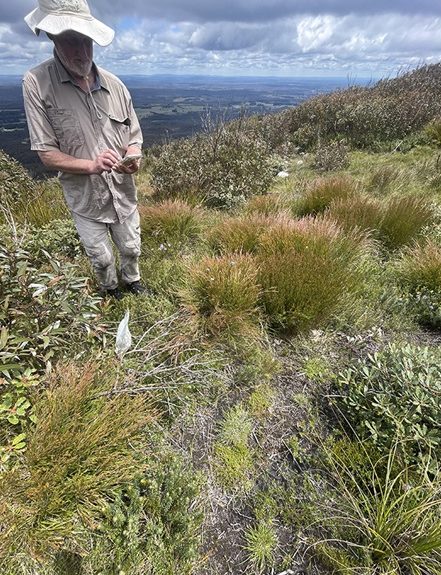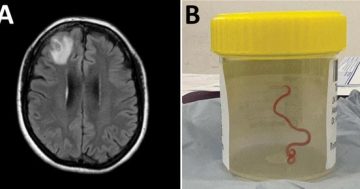
Some clumps of Budawangs wallaby grass, seen at Mount Budawang. Photo: Damon Oliver/DPE.
A population of a critically endangered plant, once thought to be almost extinct, has been rediscovered on a mountain near Batemans Bay.
It had appeared that Budawangs wallaby grass, or Plinthanthesis rodwayi, had disappeared from Mount Currockbilly in the late 1970s.
However, the NSW Department of Environment and Heritage (DEH) has announced that a population of the grass was recently rediscovered on the mountain, which is located in the Budawang National Park.
The State Government says the wallaby grass is listed as critically endangered in NSW and appears to only live on two peaks in the national park – Mount Budawang and Mount Currockbilly.
It has been on the decline for more than 50 years due to lack of fire, which helps reduce competition for habitat from native shrubs and trees that also grow at the summit of these mountains.
There were only 100 plants at Mount Budawang before the 2019–2020 Black Summer bushfires, but the Government says they are now thriving after the fire while La Nina rains also gave them a vital boost.
There are now an estimated 90,000 plants on this mountain.
Authorities thought the population on Mount Currockbilly was lost, until retired Saving our Species senior threatened species officer Dr Keith McDougall and Saving our Species South East team leader Dr Damon Oliver decided to take one more look.
At first, the pair weren’t sure that what they found was the grass. But Dr McDougall took samples and raised them into adult plants, which allowed him to confirm that they were.

Dr Keith McDougall, pictured on Mount Currockbilly. Photo: Damon Oliver/DPE.
Budawangs wallaby grass was declared an asset of intergenerational significance in 2021, which gives it special legal protection and means NSW National Parks and Wildlife Service (NPWS) can prioritise management to protect it for future generations.
NPWS has been conducting feral species control and has installed signage in the area to alert bushwalkers about the grass and to stay on the trails.
Due to the rediscovery, a management plan will be developed to include the Mount Currockbilly population in conservation measures for the species.
Meanwhile, the DEH said a large amount of seed was collected from the population on Mount Budawang earlier this year to add to the Australian PlantBank seed collection at The Australian Botanic Garden Mount Annan.
One day this collection may be used to increase Mount Currockbilly’s population.
Budawangs wallaby grass is a tussock grass that grows to 50 cm tall and has rolled leaves.
Its listed threats include being grazed by native and feral herbivores, including rabbits, as well as the likely extension and ongoing maintenance of infrastructure around a communications tower on Mount Budawang.





